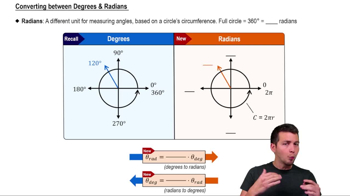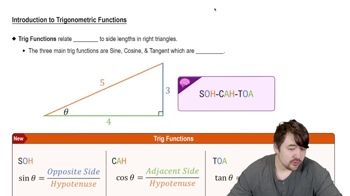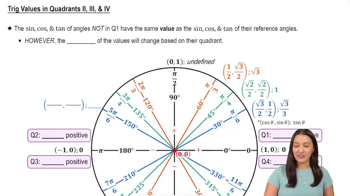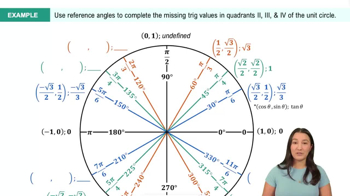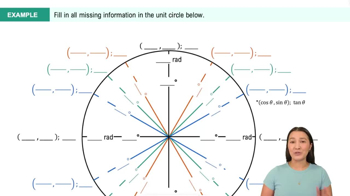Table of contents
- 0. Functions7h 52m
- Introduction to Functions16m
- Piecewise Functions10m
- Properties of Functions9m
- Common Functions1h 8m
- Transformations5m
- Combining Functions27m
- Exponent rules32m
- Exponential Functions28m
- Logarithmic Functions24m
- Properties of Logarithms34m
- Exponential & Logarithmic Equations35m
- Introduction to Trigonometric Functions38m
- Graphs of Trigonometric Functions44m
- Trigonometric Identities47m
- Inverse Trigonometric Functions48m
- 1. Limits and Continuity2h 2m
- 2. Intro to Derivatives1h 33m
- 3. Techniques of Differentiation3h 18m
- 4. Applications of Derivatives2h 38m
- 5. Graphical Applications of Derivatives6h 2m
- 6. Derivatives of Inverse, Exponential, & Logarithmic Functions2h 37m
- 7. Antiderivatives & Indefinite Integrals1h 26m
0. Functions
Introduction to Trigonometric Functions
Problem 42
Textbook Question
Solve the following equations.
sin3x=22,0≤x<2π
 Verified step by step guidance
Verified step by step guidance1
First, recognize that the equation \( \sin(3x) = \frac{\sqrt{2}}{2} \) is a trigonometric equation where we need to find the values of \( x \) within the interval \( 0 \leq x < 2\pi \).
Recall that \( \sin(\theta) = \frac{\sqrt{2}}{2} \) corresponds to angles \( \theta = \frac{\pi}{4} \) and \( \theta = \frac{3\pi}{4} \) in the unit circle.
Since we have \( \sin(3x) = \frac{\sqrt{2}}{2} \), set \( 3x = \frac{\pi}{4} + 2k\pi \) and \( 3x = \frac{3\pi}{4} + 2k\pi \) for integer values of \( k \).
Solve for \( x \) by dividing each equation by 3: \( x = \frac{\pi}{12} + \frac{2k\pi}{3} \) and \( x = \frac{\pi}{4} + \frac{2k\pi}{3} \).
Determine the values of \( k \) such that \( x \) remains within the interval \( 0 \leq x < 2\pi \). Calculate these values to find all possible solutions for \( x \).
Recommended similar problem, with video answer:
 Verified Solution
Verified SolutionThis video solution was recommended by our tutors as helpful for the problem above
Video duration:
5mPlay a video:
Was this helpful?

 5:4m
5:4mWatch next
Master Converting between Degrees & Radians with a bite sized video explanation from Patrick Ford
Start learning
